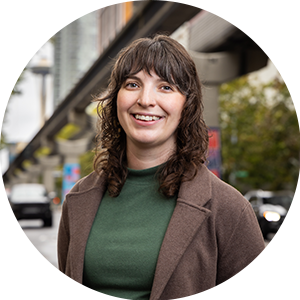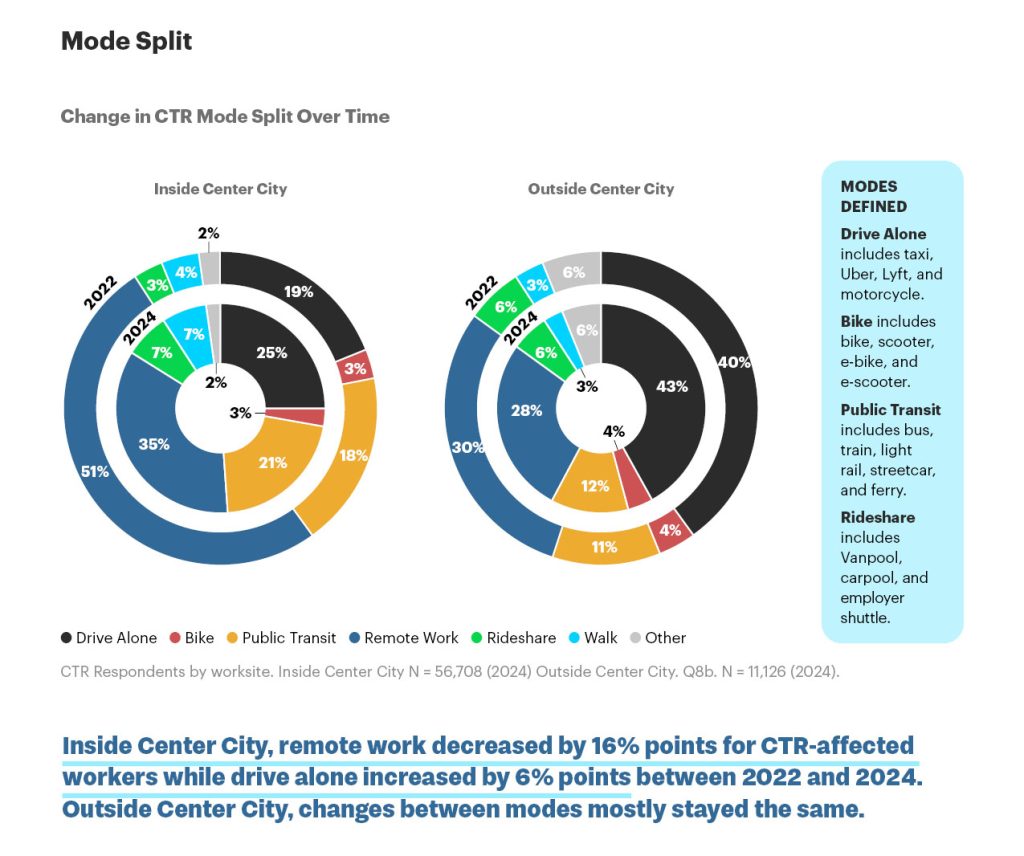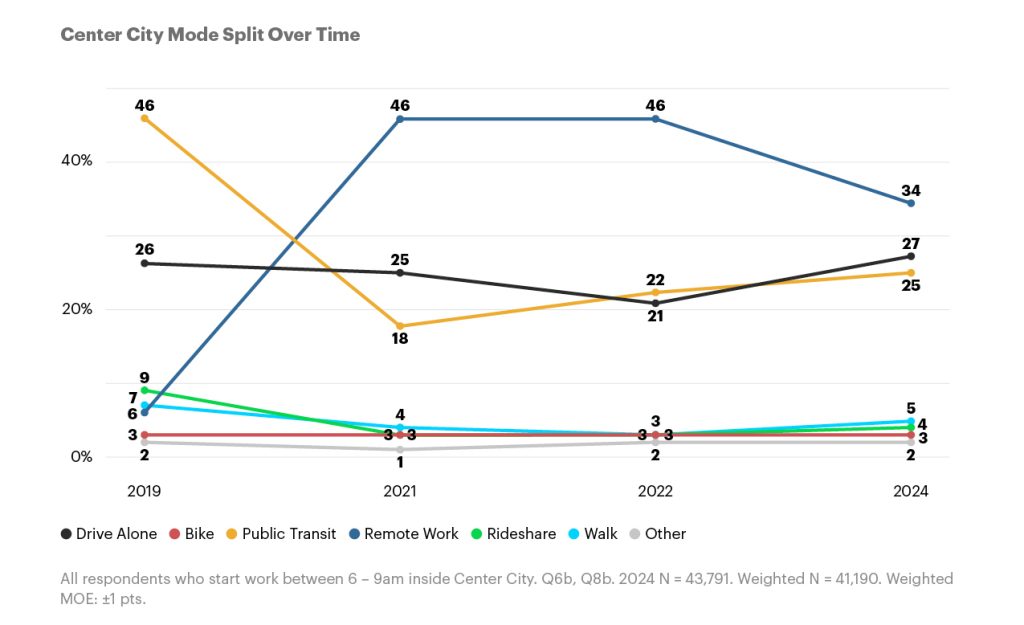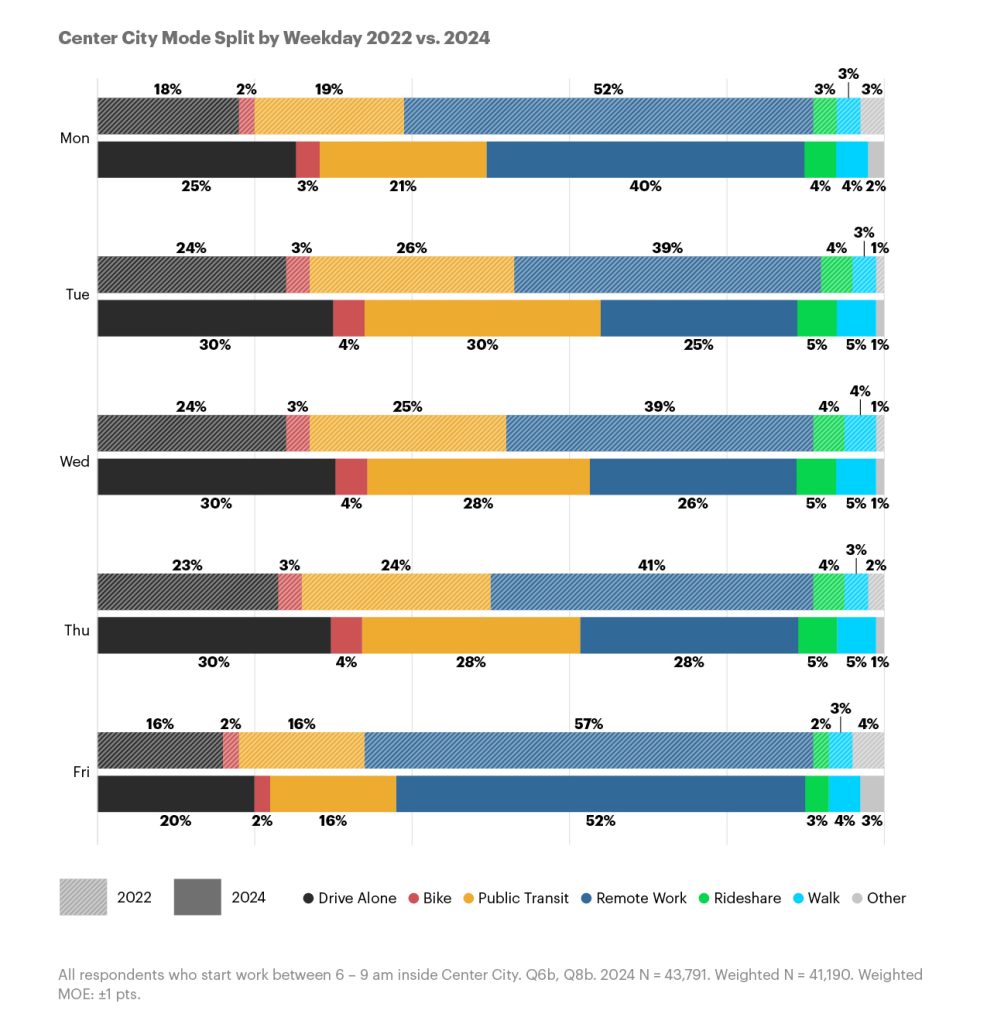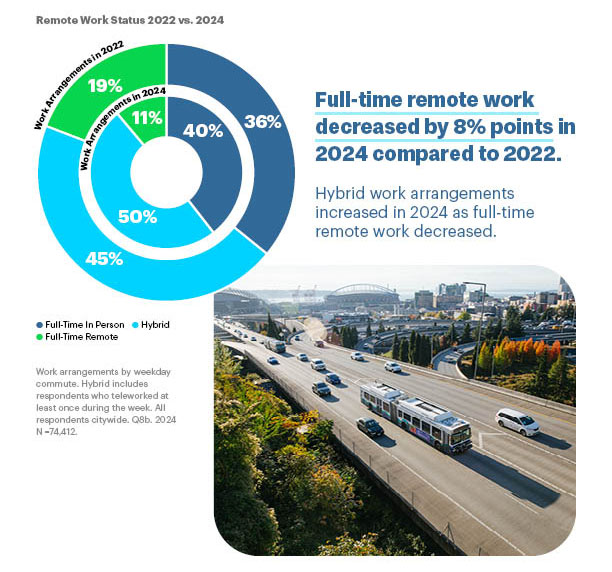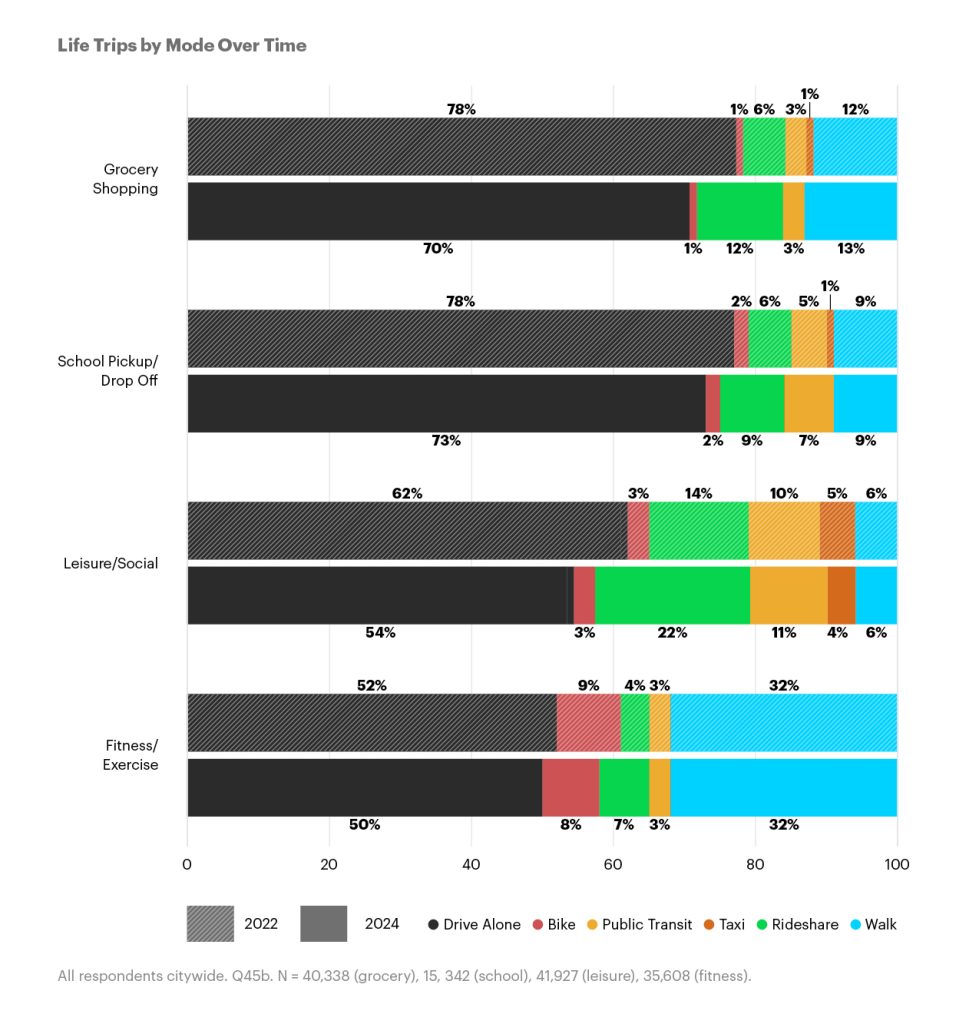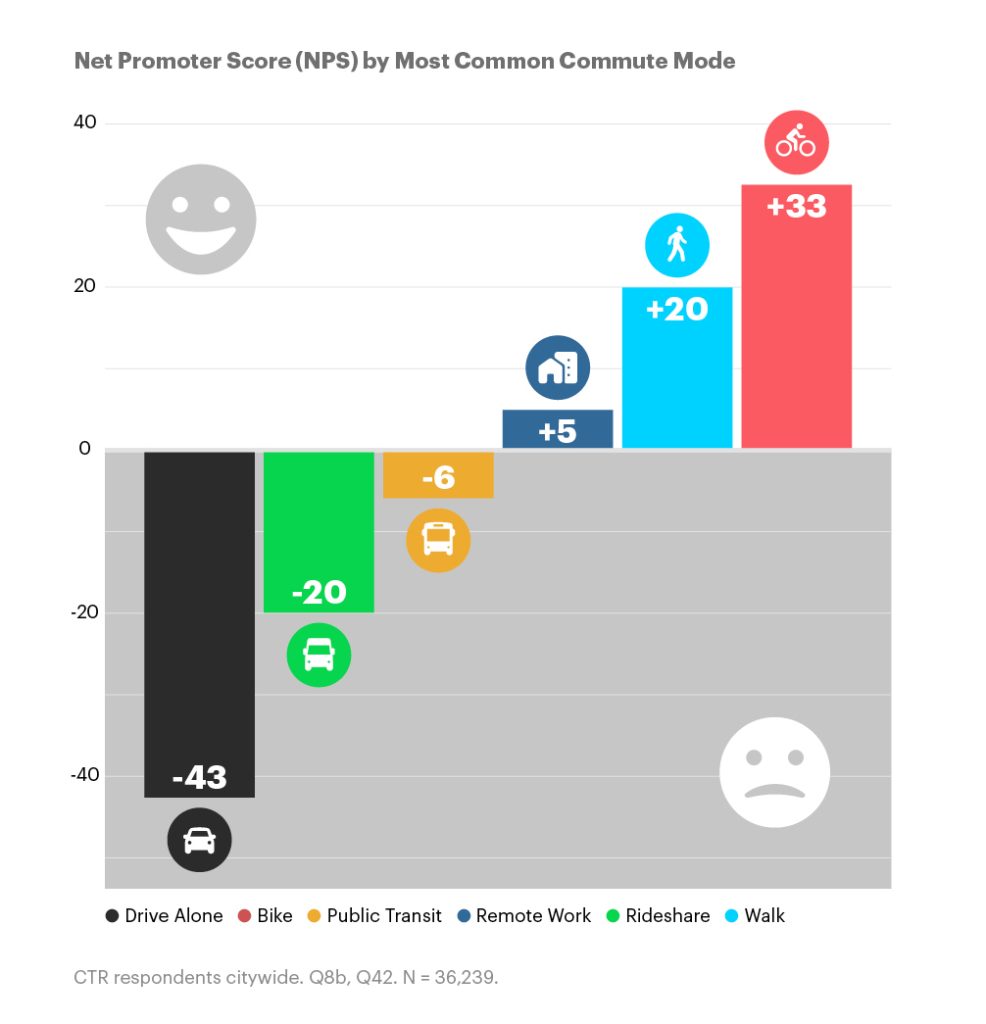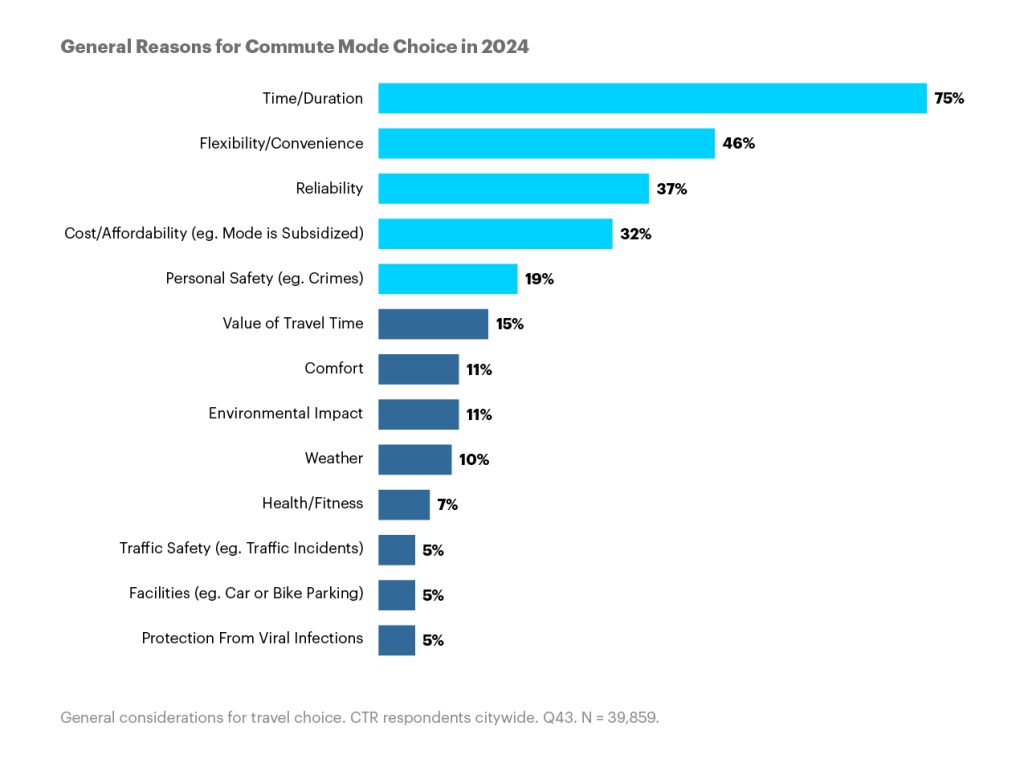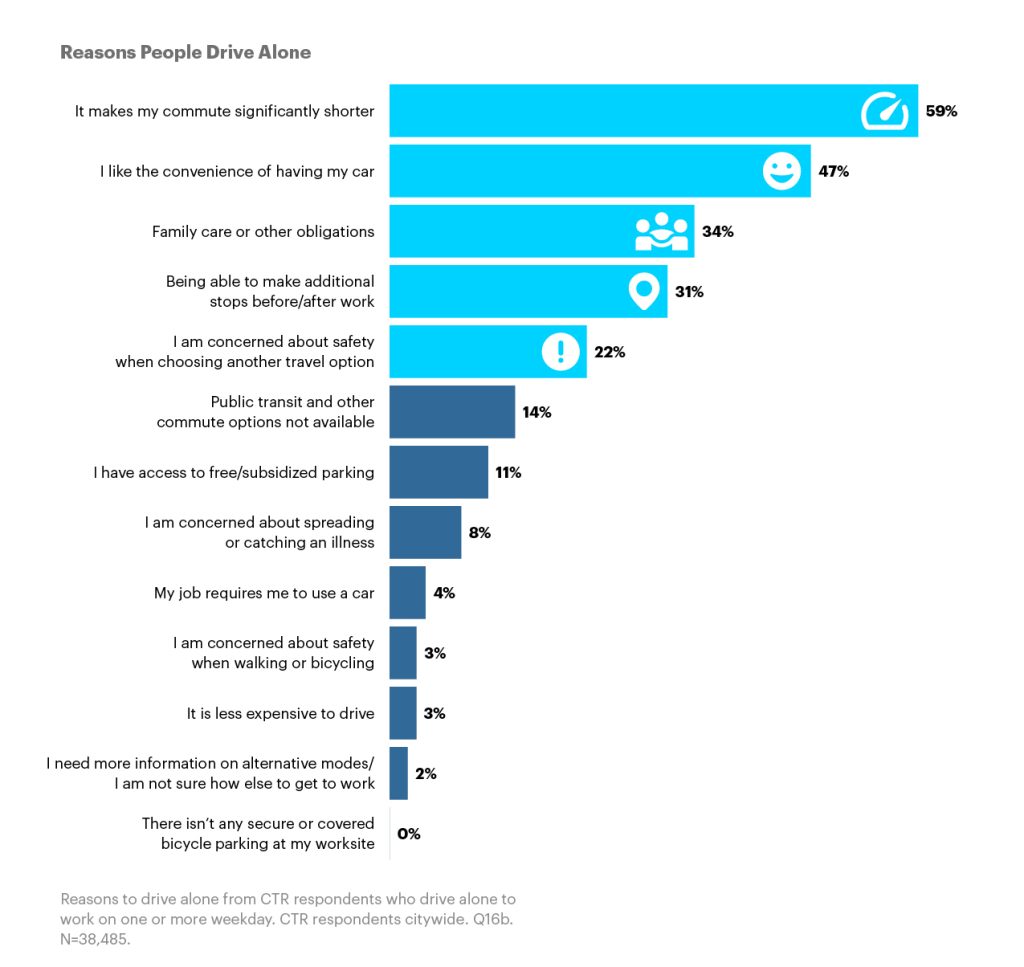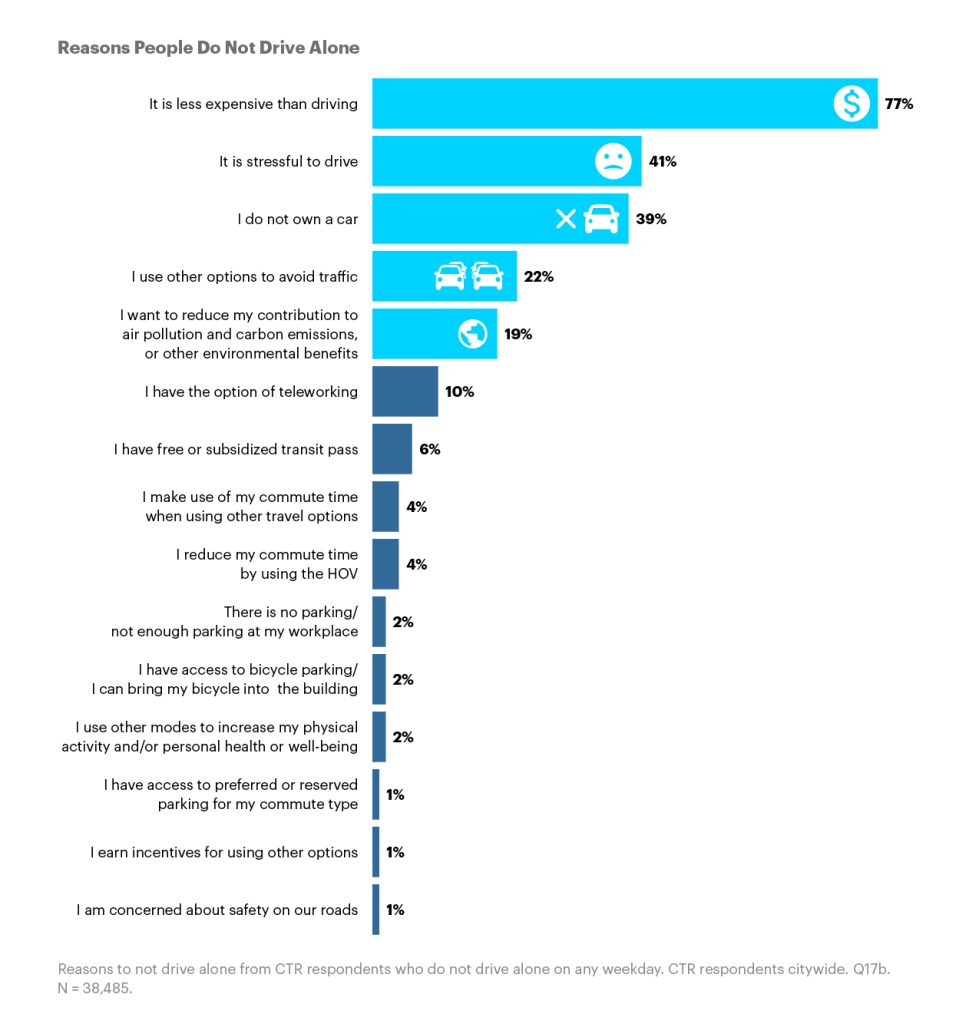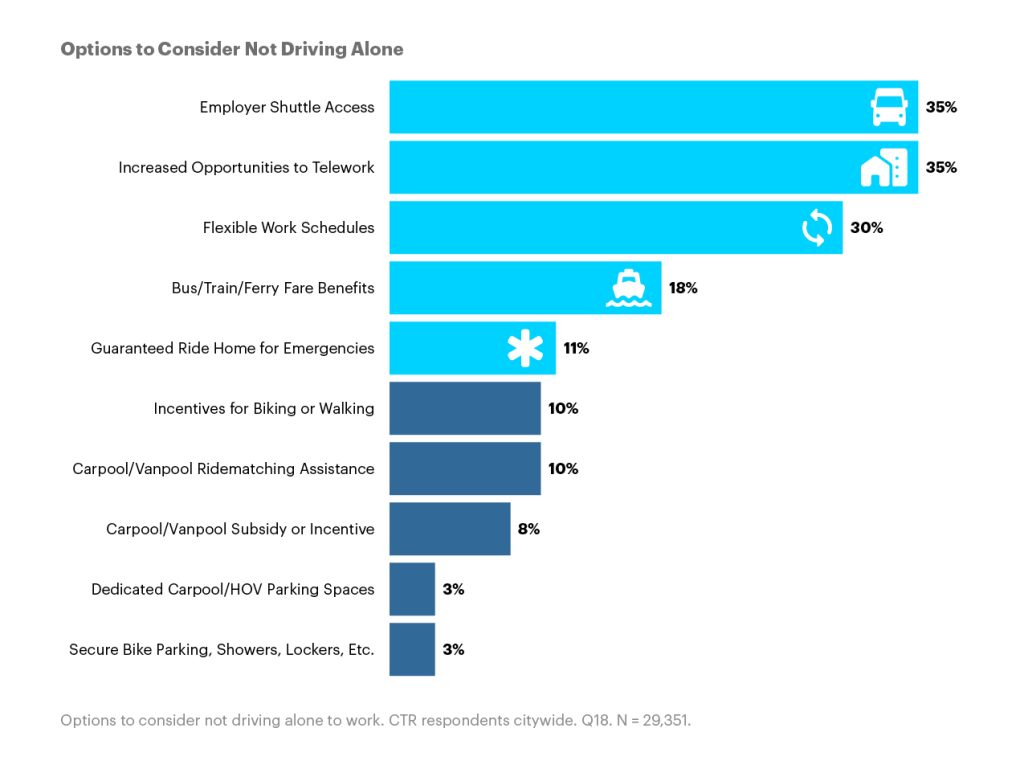How people travel across Seattle continues to shift with more in-person work in 2024.
Every other year, the Seattle Commute Survey (formerly known as the Center City Mode Split Survey) helps us understand how people get to the important places in their lives.
The 2024 Seattle Commute Survey — conducted in partnership with the Seattle Department of Transportation and the University of Washington’s Mobility Innovation Center — provides new insights into the behavior, motives, and satisfaction of over 75,000 people traveling to work, school, and other key destinations.
Need to know:
- Data was collected in the fall of 2024, leveraging a program requirement of Washington State’s Commute Trip Reduction (CTR) law.
- The survey gets sent to people who work in the City of Seattle at large and small businesses.
- Over 90% of respondents are CTR-affected employees who work for large employers.
New to this year’s survey:
- Insights into which transportation mode has the highest satisfaction amongst commuters.
- Year-over-year comparison of how people travel for non-commute trips, including grocery, leisure, and school pick-up/drop-off.
- Data from over 1,400 college students at five major institutions across the city.
Key Findings:
Findings from the Seattle Commute Survey help public and private partners better understand travel choices people are making and plan for impacts on transportation infrastructure, climate, and local economy.
Mode Split
More in-person work means both increased transit travel and drive-alone trips for CTR-affected employees in 2024.
Center City
Transit and drive alone trips increased in 2024 for all respondents commuting into downtown.
Downtown and Center City — defined as the Commercial Core, Belltown, Denny Triangle, South Lake Union, Uptown, Capitol Hill, Pike/Pine, First Hill, Pioneer Square, and Chinatown-International Disctrict neighbhorhoods — are where the highest concentration of CTR-employees work.
Tuesday, Wednesday, and Thursday remained the most popular days for in-person work downtown in 2024.
Monday and Friday continued to be the most popular weekdays for remote work in 2024, while on Tuesday, Wednesday, and Thursday, most surveyed Center City workers commute to a physical workplace.
The number of people reporting their jobs are fully remote decreased by 8% points citywide from 2022 to 2024.
Non-Commute Mode Split
Driving alone has decreased for all non-commute trips from 2022 to 2024.
Satisfaction
How you travel affects your perception of your commute.
Motivation and Preferences
People choose how they travel based on time, flexibility, reliability, and affordability.
Time, convenience, and family care obligations are primary reasons that people drive alone.
Cost, avoiding stress, and traffic are top reasons people choose not to drive alone.
Employer-provided incentives like shuttles and subsidized tranist benefits have the potential to shift mode choice and increase satisfaction.
What’s next?
The 2024 Seattle Commute Survey captures a moment in time, and trends will continue to change as work arrangements change and new transit options become available, such as light rail.
“As more people return to in-person work, they’re rethinking how they get to the places that matter most. This is a crucial opportunity for employers and the public agencies to invest in sustainable transportation options that meet people’s real needs. Smart choices now can ease commutes and help make Seattle a more livable city.” — Alex Hudson, Commute Seattle Executive Director.
“As commute patterns shift, it’s clear that people need options that are reliable, flexible, and affordable. This data reinforces the benefit of investing in safe, sustainable ways to get around,” said Candida Lorenzana, Director of Transit & Mobility, Seattle Department of Transportation. “By investing in transit, bike, and pedestrian improvements, SDOT is working to make commuting easier and more accessible for everyone traveling to and through Seattle.”
“We are in the midst of a number of significant changes for how people travel in the region,” said Mobility Innovation Center Director Bart Treece. “Academia is a strong partner to help us all understand the key insights and clarify policy choices that can make a difference and improve transportation in our region.”
Commute Seattle looks forward to diving deeper into the stories within the data. The stories that emerge help public and private sectors meet the needs of people who live and work in Seattle and get us closer to our vision of a region where affordable and sustainable options are the best way for everyone to connect to the important places in their lives.
Press & Media Inquiries
